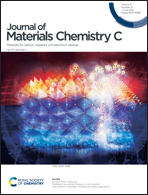Tuning the optical properties in CsPbBr3 quantum dot-doped glass by modulation of its network topology
Abstract
All inorganic metal halide perovskite quantum dots (QDs) exhibit excellent optical properties promising for diverse applications, while their inherent frangibility remains an enormous challenge for both scientific research and practical applications. Recently emerged oxide glasses doped with such QDs exhibit high stability against degradation and are thus highly promising for photonic applications. Here, we demonstrate the tuning of the linear and nonlinear optical properties of perovskite QD-doped glass through modulation of its network topology. By introducing a metal fluoride network modifier, we show that the precipitation of the QDs can be promoted as a result of the enhanced ion mobility during heat treatment. The QD-doped glasses show strong one-photon and two-photon upconversion photoluminescence (PL). Also, the PL intensity can be enhanced by up to 800% for the sample with an optimal local structure. In addition, the control of QD precipitation by modulating the glass network topology could allow for the observation of a cross-over from saturable absorption to reverse saturable absorption. The methodology for tuning the optical properties of QD-in-glass composites studied here might be applied for the design of photonic glasses for relevant applications.

- This article is part of the themed collection: Editor’s choice collection: luminescent metal halides


 Please wait while we load your content...
Please wait while we load your content...